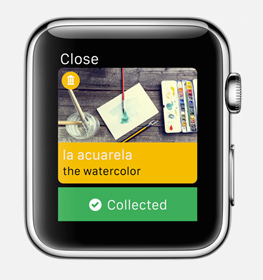Why Pinterest Updates Its Mobile App Every 3 WeeksWhy Pinterest Updates Its Mobile App Every 3 Weeks
As established companies embrace mobile apps, they'll need to think more like Internet companies such as Pinterest.


10 Apple Watch Apps: Which Ones Will You Use?
10 Apple Watch Apps: Which Ones Will You Use? (Click image for larger view and slideshow.)
Pinterest puts out a new version of its iOS and Android mobile app every three weeks, like clockwork.
For companies used to doing "ship when it's done" software development cycles, or thinking in terms of quarterly or annual projects, putting new code in front of tens of millions of customers every three weeks might sound daunting, even impossible.
Why did Pinterest choose a three-week cycle? "Because I got pushback when I tried for two? That's the honest answer," said Mike Beltzner, mobile product lead for Pinterest, in an interview with information.
Pinterest is a visual bookmarking tool that people use to share creative ideas, from recipes and fashion to hiking trails and mobile apps. Ever since Pinterest embraced this rapid-release schedule for mobile apps in 2014, a lot of benefits have flowed from the process.
Below are just three of the benefits that Beltzner shared with me. (IT leaders can hear more from Beltzner and other creative technology thinkers at the information Conference, April 27 & 28. Learn more and register.)
Pinterest Can Test New Ideas More Easily
Eighty percent of Pinterest traffic comes from mobile devices today. But testing new features is harder with mobile apps than with Web apps, Beltzner notes.
With Web apps, a company can change one piece of functionality, implement it, and all your customers are instantly using the latest code base. Mobile apps complicate that process, since the app must go into an app store and the customer must update it.
With a three-week release schedule, and with more customers updating automatically, the process somewhat replicates the pace of deployment of Web development, he says.
Pinterest will do A/B testing with some new mobile app features. The company will ship two experiences within an app update, and let the app decide which to give upon launching. Pinterest can then study whether customers like and use the new features.
Pinterest developed its own platform for managing that kind of A/B testing, but third-party software such as Optimizely also can help manage that process. (Pinterest posted an in-depth engineering blog on its A/B testing.)
"There is absolutely no replacement to having users experiencing an app at scale."
Developers Worry Less About Breaking Pinterest
It's a truism of software development, Beltzner says: "The more you change, the more you can regress or break."
[Read Gmail Android App Connects Yahoo, Microsoft Accounts.]
A three-week development cycle means Pinterest can change just a small piece of the mobile app code each time. Then, if something's not working right, the company can quickly pinpoint the code that caused the problem and fix it.
When Pinterest had more time between releases, it meant that developers packed many more changes into each version. The team did one to two weeks of bug fixes ahead of the release, and then generally had a clean-up release a week later. "The longer you went between releases, the more time you had to spend protecting against the change," Beltzner says.
Doing a three-week cycle did take some changes to testing. Pinterest's 500 employees are part of the testing process, since they constantly use the app. They have "rage shake" software on their phones. If something doesn't work right, they shake it. The phone captures what's happening at that moment, and the employee can share notes on the problem. Pinterest employees get automated updates as often as five times a day with new features. Even a large human testing lab like this isn't sufficient though. Beltzner says companies must start with a solid automated testing platform.
Still, the risk-reward trade-off here is one of the paradoxes of quicker software releases: The risk of any one code change is smaller, so you can innovate faster with less risk.
Pinterest Can Pounce On Opportunities More Quickly
Apple approached Pinterest with the idea of letting people download iOS apps directly from Pinterest. Customers already were pinning their favorite apps on the site, so why not let people download those apps right from Pinterest?
Once Pinterest decided to go ahead with the idea, it was able to implement it in two-and-a-half weeks. For 2015, a big strategic focus is making pins more actionable, like those downloadable apps are.
Any IT leader has to ask: How long would it take our team to execute on an idea like that? What would we have to change to get development and implementation in close to two-and-a-half weeks?
As more companies build customer-facing apps or embed software into their products, conventional companies must behave more like software companies. Doing so might mean dramatically changing the rhythm of software releases and changes.
For Pinterest, three weeks was the right number, but now developers are pushing for two-week cycles. Whatever the number, Beltzner said he sees no desire to go back to a longer release cycle. "When opportunities come up, you can benefit from them very, very quickly."
Are you an IT leader considering attending the information Conference? You can Email me with questions, or register now and save $200 off information Conference passes with discount code CMBLOG. Other speakers include the CIOs of Walmart, AstraZeneca, the NBA, ConocoPhillips, Royal Caribbean, and more, along with 3D Robotics CEO Chris Anderson, discussing drones and the future of automation.
About the Author
You May Also Like






